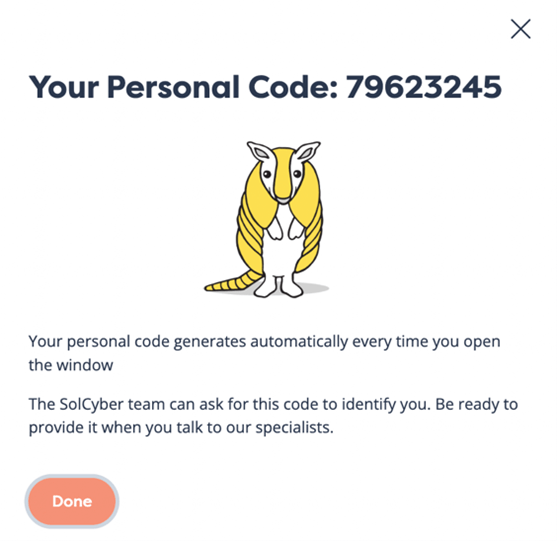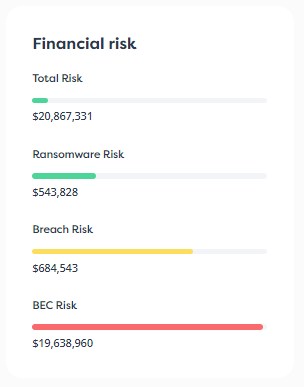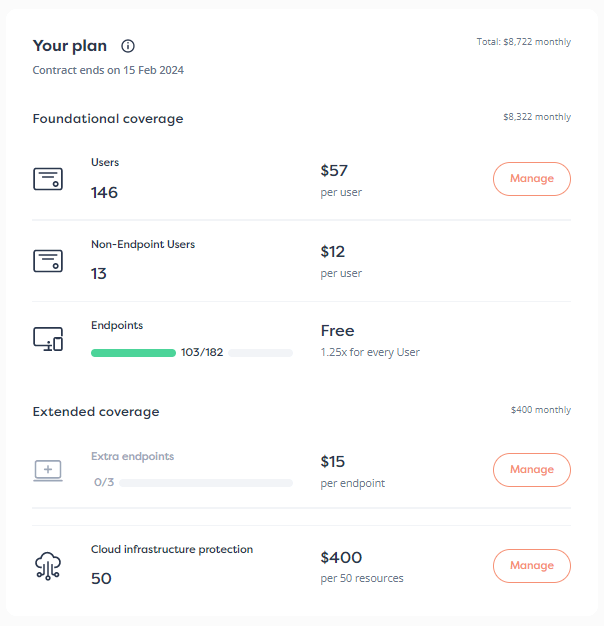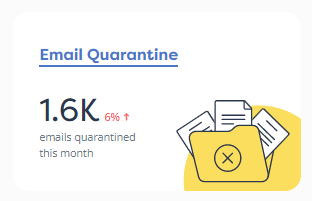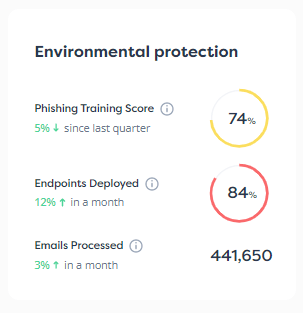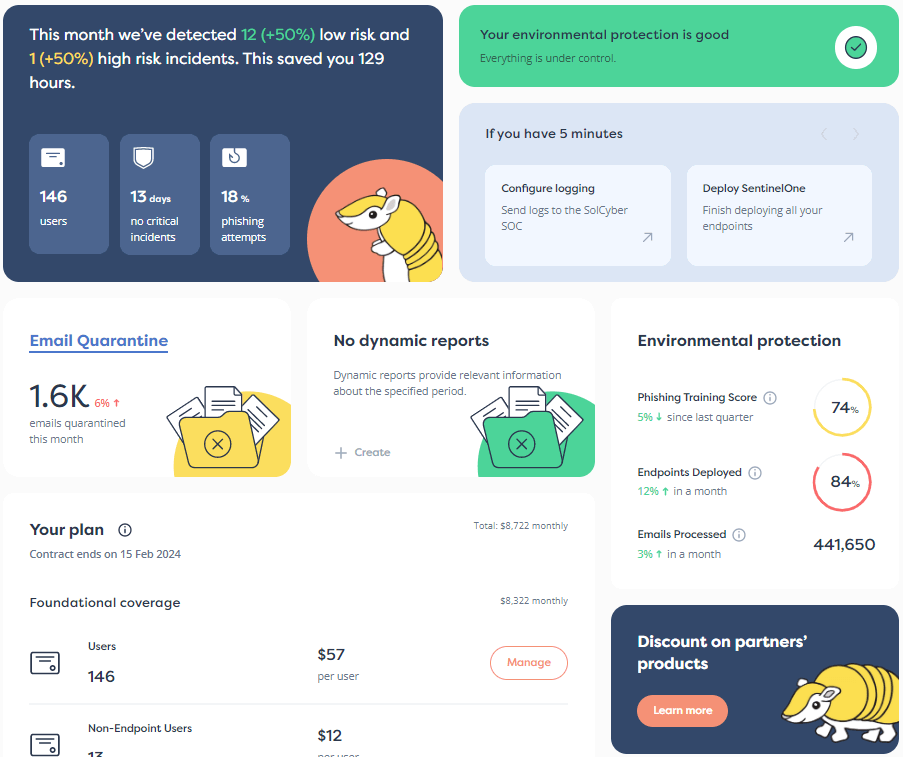

Organizations are becoming more aware of the need for MDR (managed detection and response) services to achieve real cyber resiliency. The increase in the quantity and sophistication of cyberattacks means that other, siloed solutions, fall short of fully protecting your organization.
Whereas no one can guarantee that you won’t fall victim to a cyberattack, the use of MDR significantly decreases that risk and its overall impact. Implementing MDR also gives you the greatest chance of effectively and rapidly recovering from a cyberattack, should one happen, which is crucial to minimizing the inevitable financial losses.
Despite the above benefits, many companies are still confused about what, precisely, MDR security can do for them. Making matters worse, not every MDR security service is the same. Some companies offer more than others and choosing an MDR service that doesn’t offer everything necessary for cyber resilience will leave you vulnerable.
When looking for MDR providers, it’s vital to know all the managed detection and response benefits that exist. If the provider you’re looking at doesn’t offer a particular benefit, skip it.
Here’s the full suite of essential features your MDR provider should offer.
Hackers don’t work nine-to-five. Their tools operate 24/7, and the threat actors behind those tools specifically schedule attacks during their target’s off-hours. That means your managed detection and response services must also operate 24/7.
The window of time between compromise, detection, and response is the difference between what constitutes a small compromise and a devastating one. By offering 24/7 security monitoring and response, MDR providers can mitigate the effects of a security incident as quickly as possible.
One of the primary differences between MDR and other services is that MDR offers both monitoring and resolution. In other words, when MDR tools signal the fire alarm, personnel exist to put that fire out. Relying solely on in-house staff, who aren’t necessarily available 24/7, means you’ll wait longer to mitigate the effects of a security incident—thus increasing the damage to your organization.
The first step to responding effectively is actually having someone there who’s capable of responding. The second step is having a thorough incident response plan (IRP) in place.
According to the Cybersecurity and Infrastructure Security Agency (CISA), an IRP is “a written document, formally approved by the senior leadership team, that helps your organization before, during, and after a confirmed or suspected security incident. Your IRP will clarify roles and responsibilities and will provide guidance on key activities. It should also include a cybersecurity list of key people.”
As the above definition shows, an IRP is far more than a few hastily jotted notes on how to respond. It’s a full-scale response plan that includes all stakeholders and business functions and applies during all phases of a security incident.
IRPs must also be fully drilled and frequently updated based on changes in the security and threat landscape, internal environment, and other elements that might affect the response.
Designing an effective and workable IRP is a skill in itself. But once you have one, you also need a security team in place that can take action to execute that plan.
If a security solution only provides alerts and expects you—the client—to take remedial action, then it isn’t an MDR solution. Very few organizations have the in-house expertise, time, or resources to respond effectively to a security incident; they need the resources a third party offers. MDR brings rapid detection and response to the table so that incidents have little chance of doing serious damage.
One major gap that MDR services fill is the lack of cybersecurity expertise available for hire. The World Economic Forum predicts that the cybersecurity labor shortage gap could reach as much as 85 million workers by 2030.
However, even if an organization finds the right personnel, it’s often saddled with a lack of budget priority to hire them. Smaller organizations simply can’t afford to spend the amount of money required to build strong internal security teams. That makes MDR services essential for smaller organizations.
Bringing on an external MDR service is crucial to building a cyber-resilient strategy and ensuring that your internal processes are sound. MDR services also help you achieve compliance while managing new threats and vulnerabilities.
Security responses must be adaptive to the current landscape, and that can only be achieved with human-led responses. Using solely automated tools opens the door to increased levels of both false positives and false negatives. This is also the case for vendors that tout the use of AI, as it’s often an indication that they’re replacing human-led support. Experienced human analysts are necessary to bring order to these automated alerts, prioritizing only what needs attention and discarding the rest. Unlike automated services, they can also respond much more effectively to new kinds of attacks and adapt on the fly.
One of the most important benefits of MDR security solutions is that they provide solutions at scale, meaning your costs will be lower. Trying to achieve the same level of expertise, solutions, MDR technology, and tools 24/7 in-house could easily cost hundreds of thousands of dollars. Few companies can justify that spend.
MDR solutions provide the necessary expertise and solutions at a fraction of the cost, allowing your company to truly achieve cyber resiliency, and do it at a discount.
Using MDR services results in implementing the necessary cybersecurity solutions much faster because the MDR team comes fully equipped. Following this method is the most operationally efficient approach and also the most budget-friendly. Even if you had the finances to develop everything an MDR provider offers, it would require a great deal of time and effort from multiple departments. Those commitment costs can slow down new product development, interrupt business operations, and delay teams from accomplishing their goals. For most businesses, it’s too much of a burden to build a solid cyber defense from the ground up internally.
One of the biggest challenges of maintaining an in-house security solution is that the security landscape changes so rapidly. Similarly, if the MDR service you’ve invested in isn’t leveraging its threat analysts and threat hunters to stay on top of trends, you won’t be fully protected.
The best MDR service providers are—and must be—extremely proactive in their approach to threats.
For example, one of the latest trends in cybersecurity is Ransomware-as-a-Service (RaaS), which empowers threat actors to find and deploy sophisticated ransomware more easily than ever. They simply pay an affiliate fee to a ransomware “service provider,” and they can attack any company for a small price. Such attacks were unheard of just a few years ago.
The developments in AI are also changing the landscape in unprecedented ways. It’s true that plenty of unfounded fear exists regarding AI threats, but it’s also true that ignoring this technology and not actively analyzing it for potential risks is a massive strategic error.
Effective cybersecurity requires knowing about cyber threats before the bad actors do.
A proactive MDR service must operate and think with new data, not be hampered by old data and strategies. This approach is crucial to be prepared for:
Even when you’ve carried out all the necessary system updates and frequently perform vulnerability scanning to maintain your network security, an effective MDR service must go that extra step and look beyond the reports.
If an MDR service focuses too much on old strategies and doesn’t act proactively, you won’t get effective resiliency. Threat actors make it a point to focus more on targeting companies whose methods are antiquated because those companies are easier targets.
We believe MDR is table stakes for any organization. All companies should consider vendors that offer the most expansive cybersecurity services. This means your MDR provider should be prepared to offer increasingly robust solutions as your company grows and scales. For example, one solution that larger companies tend to scale into is XDR—extended detection and response—which consolidates detection and response services for the cloud and beyond.
The MDR provider might also be able to serve as an MSSP—managed security services provider, which is essentially an outsourced cybersecurity partner that can offer your company dedicated resources beyond just detection and response.
If your MDR services vendor is limited in its ability to expand service as you grow, you’ll have to change providers in the future, which can be both costly and time-consuming. Instead, consider working with a vendor that can stick with you through all phases of your expansion. They’ll already have an understanding of your environment and be able to adapt quickly to changes. Bringing in a new vendor adds a period of growing pains that could weaken your security posture during the changeover period.
When investing in an MDR solution, the best approach is to consider it a long-term partnership. Like any investment, you must perform your due diligence before going in—that means knowing precisely what an MDR vendor should provide and also knowing what additional services they can offer when you start scaling.
Before investing in any MDR service, have open and candid conversations with the potential vendor before moving to the next level of negotiations.
If a vendor hedges or can’t answer your questions, it’s unlikely they can offer all the necessary services required. Finding the right MDR does require time and effort, but it pays off in the end.
SolCyber goes above and beyond as an MDR services provider—so much so that we even called our service MDR++ to differentiate it from other offerings. Our MDR++ service is human-led, operates 24/7, and includes all the essentials to effectively protect your business. We also have the capability to scale with your organization, providing increasing tiers of service that match what you need, when you need it.
We’d love to know more about your business and find out how we could help. To learn more about SolCyber’s MDR offering, visit our MDR page here.


By subscribing you agree to our Privacy Policy and provide consent to receive updates from our company.

